The Chicago Ghoul Who Would Not Die! How horror host Svengoolie has stayed on the air for decades
Published in Entertainment News
CHICAGO — Svengoolie, also known as Rich Koz, also known as the Son of Svengoolie, also known as the top-hatted cadaver with the goatee and the rubber chickens who introduces monster movies on Saturday night television, also known as the most enduring horror host in Chicago broadcasting history, would not allow me to watch him apply his makeup. Mysterious. But just not something he’s comfortable with. He would also not allow a peek inside Castle Svengoolie, his home coffin, in the moors of Oak Park. Peculiar. Yet understandable. Since he transformed in the late 1970s from a mild-mannered native of the western suburbs into a grotesque freak/jokester/vampire/zombie — Koz never really settled on what species or profession Svengoolie can claim — he has been a fixture of Chicago TV, conventions, parades. And sometimes the fans can be … creepy.
You get it.
Rich Koz has been Svengoolie for 45 years now. But at 72, he’s never been hotter.
On a weekday afternoon at WCIU-TV Channel 26 in the West Loop, where Koz tapes his nationally distributed creature-feature show for Weigel Broadcasting’s MeTV, he sits at a table in his makeshift dungeon, surrounded by a zero-budget set. And it is his studio. MeTV uses it for other shows, but Svengoolie props dominate the space. Indeed, for the 30 years Koz has been at Weigel, Svengoolie outgrew his studio at least once. Even now, as you enter the building, you run into a cardboard Svengoolie (with matching coffin) in the lobby. And an inflatable Svengoolie lawn decoration, which MeTV began offering this fall; within 24 hours, all inflatable Svengoolies were sold out.
At $100 a pop.
NO PERSONAL CHECKS! (As Svengoolie likes to warn.)
A good horror host is like an inside joke, handcrafted, corny, special to a small circle of viewers, full of shorthand references that leave outsiders dumbfounded. A good horror host, for most of the 70-year history of the job, is also personal — local, local, local.
For the first 30 years or so that Koz played Svengoolie, he served that purpose in Chicago, available on occasion to promote a local supermarket or do a commercial for Menards. Then, 13 years ago, Weigel’s MeTV network and its programming full of nostalgia for the good old days of pre-streaming TV brought Koz and Svengoolie into cities across the nation. Now, according to Neal Sabin, vice chairman of Weigel, the Svengoolie show — which consists of Koz and Co. goofing between commercials, doing parody songs and sketches, giving background on the night’s movie — draws 1 million viewers every week, nationally. There are Svengoolie action figures, Halloween masks, retro lunch boxes, coffee mugs. Recently, he was the co-star of his own DC comic book series. Other than reruns of “Bonanza” and “M.A.S.H.,” “Svengoolie” is MeTV’s most-watched series, and its best-known Chicago-bred intellectual property. It’s so successful that its place in the Saturday programming block — which includes the ‘60s iterations of “Star Trek” and “Batman” as well as Three Stooges films — was expanded in the past year from two solid hours of Svengoolie to two-and-a-half hours.
One reason for this popularity, perhaps, is that Koz and Svengoolie — and they truly are one and the same — are among the last of their breed, throwbacks to the early days of local television. “He’s a little Borscht Belt,” said Sabin, “but also, a little vaudeville, too. And a little UHF basement programming, and there is a real charm to that in 2024.”
There was a time, from the late 1950s to the early 1980s, when Svengoolie was far from unique. Every major TV market, and plenty of medium-sized ones, had their own locally based ghouls, introducing monster movies and sci-fi chillers from a cardboard crypt. San Diego had Moona Lisa and Detroit had Sir Graves Ghastly. Northeast states had Zacherley. There was Gorgon (Dallas), Ghoulardi (Cleveland), Morgus the Magnificent (New Orleans), Dr. Creep (Dayton), Fritz the Night Owl (Columbus), Sivad (Memphis), Sammy Terry (Indianapolis), Vampira (Los Angeles) and the Cool Ghoul (Cincinnati).
Actor David Dastmalchian — a former Chicago stage actor who became a ubiquitous character actor in “The Dark Knight,” “Dune,” “Suicide Squad” and many others — said that he “truly cares about this weird little TV subculture Svengoolie exists in.” Whenever he’s in Chicago, he appears on Svengoolie, playing his own creation, Dr. Fearless. For five years now, he’s also written the Dark Horse Comics series “Count Crowley: Reluctant Midnight Monster Hunter,” about a TV horror host who fights real creatures.
“I grew up in Kansas City, where we had Crematia Mortem,” he said. “It was like she held my hand and introduced me to schlock but also a lot of classic horror films. She did it with comedy, on a small set, making jokes about local supermarket chains and the Kansas City Royals. And it was like she was just down the street. It felt like home.
“Rich is nationally beloved now, but he’s always a Chicago ghoul down the block. He makes you feel safe. There’s no irony there, he’s very Chicago, and yet, the number of (Hollywood) people I work with who are in love with him! Mark Hamill watches weekly, and I know that because every time I’m on ‘Svengoolie,’ I get an email of appreciation.”
Count Gore De Vol, also known as Dick Dyszel of Gage Park, has been a horror host for 51 years. For the past couple of decades, he’s been primarily online, but he’s still a legend in his home market in Washington, D.C. That Koz is still doing this on TV, he said, is a testament “to what a distinct TV city Chicago has been. You had Bozo, Garfield Goose, you had ‘Lunchtime Little Theater’ — all Chicago-produced goofy entertainment. Rich becoming a nationally recognized figure doesn’t change that, because his base is Chicago.”
What was once a quirk in local programming eventually became a link back to locally crafted charm. Just as the horror host, once seen as a purveyor of a B-movie bargain bin, became, without intending to, a kind of dressed-down argument for film preservation, making backdoor cases for now-classic standards like “Invasion of the Body Snatchers,” “The Thing from Another World,” Universal monsters and Godzilla.
Koz wouldn’t disagree; he’s a horror movie nut and a comic book collector.
But he prefers to leave the larger meaning of Svengoolie to others.
One day we talked in his studio. Behind him was a tub of rubber chickens. Around him were homemade homages, given to him by fans — Svengoolie skateboards, latch-hook rugs, nutcrackers, pumpkins, Legos, tin-can puppets, ukuleles, Hello Kitty dolls, Trolls, paintings, guitars. Standing in the corner was a mannequin of Koz in full costume, and surprisingly realistic. A fan recently mailed it to him. It’s kept beneath a floral dining cloth. It freaks out visitors, though it’s great for when they show “House of Wax.”
Classic mad-scientist lab equipment gurgled and buzzed against stone walls made of foam… what was this place supposed to be anyway, I asked. A mausoleum? A castle?
“You know,” Koz said, “I don’t know.”
At WCIU on Halsted Street, there is a small closet where Svengoolie keeps his wardrobe. It has top hats on hat stands. It has beards. Koz has been wearing one of those beards since 1979. Eww, I say. He shrugs. He wears a tuxedo coat and red shirt and beaded chain and dark circles around his eyes. He has a painted-on mustache because the adhesive used to hold his old mustache on was seeping into his mouth, ruining his gums. He carries a rubber chicken. Jim Roche, his executive producer, has been sourcing Koz’s rubber chickens from the same Washington state novelty shop for decades. “I know more about rubber chickens than anyone should,” Roche said, then added, straight-faced, “You have to be careful. The Interstate Poultry Act …”
“OK, here we go,” Koz said, knowing Roche can’t resist a joke.
“I’m not sure of the penalty for violating the act,” Roche said.
You’ve been listening to this schtick for years, I said to Koz, whose head was bowed.
“Uh … yeah,” he said and reached for a package of spirit-gum adhesive.
“That’s black tar heroin,” Roche said.
“Would you stop?” Koz said.
They sound like their show. There’s a prehistoric chicken named Kerwyn who sounds like Jerry Lewis (Koz does the voice). Svengoolie’s coffin chortles like Morey Amsterdam. The music is by Doug Graves (Koz’s childhood pal Doug Scharf). Chicago broadcaster Bill Leff is Nostalgiaferatoo. The jokes are intentionally cheesy and haven’t changed much in years. In fact, the set (created by Elgin-based Acme Design), partly assembled from an old movie projector, has gauges that read “Corn-o-Meter” and “Cheese-o-Meter.” It all plays so lightly anarchic and off-the-cuff you imagine everyone involved was day-drinking. Or at least running in from other jobs with half-assembled scripts and gags and props. And yet Koz writes everything. (“You can blame me,” he said.) That it’s also full of belly laughs and genuine film appreciation, and not merely insufferable, is their professionalism, however buried it is beneath dry ice and chickens.
For more than 70 years, the horror-host format has remained surprisingly solid, nearly unchanged since its inception. But its precise origin is debatable. You can hear its roots in early thriller radio shows like “The Inner Sanctum,” hosted by spooky voices reveling in the ominous and morbid. You can also see its roots, argues Jason Hignite, an Indiana environmental scientist who runs horror festivals and co-founded the Horror Host Hall of Fame, in a long-forgotten Chicago show called “Murder Before Midnight,” which ran on WBKB-TV (Channel 4) from 1950 to 1953. (It’s now WBBM-TV Channel 2.) A swami character (played initially by TV announcer Allen Harvey, then Chicago radio actor Art Hern) ran his hands across a crystal ball, conjuring that night’s scary picture.
The job, though, was defined by “The Vampira Show” in Los Angeles in 1954 (revived decades later with a new host named Elvira), then spread nationwide in 1957 after the TV division of Columbia Pictures began offering stations a package of 52 movies that included Universal classics like “Dracula” and “Frankenstein Meets the Wolf Man.” This was pre-home video, when the best way to see old films was a revival house. “Stations thought they couldn’t just show films like that to an audience at home,” Hignite said. “So they collectively wondered how to present it weekly.” Plus, since run times could be brief, stations would need some padding to fit a horror flick into a programming block.
In Chicago, the first real horror host was Mad Marvin on Channel 7, played by Terry Bennett, a station producer/promotion director/accomplished ventriloquist. The show was “Shock Theatre,” and compared with the family-friendly gags of Svengoolie, it lived up to its title. Each week, Marvin pretended to hang and electrocute his assistant (played by his wife, Joy); in one episode, during breaks from the movie, he announced he had swallowed poison and would describe, throughout the evening, his slow death.
Despite the popularity of “Shock Theatre,” the show was canceled after two years. Station execs didn’t think much of horror hosts and B-movie chaff. Hosts themselves were often staff announcers or weathermen doing double time. Cheaper yet: Forget the host entirely. That became generally true in Chicago after “Shock Theatre.” There was “Thrillerama,” “Science Fiction Theater,” “The Big Show,” but no creepy hosts for years.
Not until Svengoolie arrived in 1971.
The character started on WFLD-TV Channel 32, hosting “Screaming Yellow Theater.” His real name was Jerry G. Bishop, Chicago TV and radio personality, and staff announcer at Channel 32. He dressed like a hippie vampire. He adopted a Bela Lugosi accent. He played guitar. He poked fun at Berwyn. He had the staff throw rubber chickens at him when the jokes were bad. He was a smash, and one of his biggest fans was a student at Northwestern University named Rich Koz. Unsolicited, he sent Bishop some jokes.
Koz, without makeup on, reminds me of a sad Muppet. He has bushy gray eyebrows and a deadpan face, as if he’s played exasperated foil to a cast of maniacs for so long his face stayed like that. Roche said Koz is basically Svengoolie: “It’s not a stretch.” Koz (pronounced CO-z) grew up in Morton Grove and attended Maine East High School. As a child, he avoided scary movies. He was small, a shy kid, in school band, involved in theater and the school radio station. He studied communications at Northwestern until he couldn’t afford it anymore. The good thing is, about this time, Bishop began using some of the jokes and sketches that Koz had been mailing him.
“Jerry and I had a similar sense of humor,” Koz said. “He found out I was studying broadcasting and invited me to the station to help write a song parody or maybe a joke about a local commercial. I got to do a voice here or there. I never thought of it as leading to work. I was about 19. Jerry paid me out of his own pocket. Then Svengoolie was canceled.”
Channel 32 was sold; indeed, station ownership changes dictated the character’s fortunes for the next 20 years. “Jerry went to radio then and brought me with him. We would drive to work together and go through the newspaper, coming up with bits. I was 85% of the goofy characters he talked to on the radio. I also started working for Dick Orkin, who made a lot of funny Chicago commercials and did the ‘Chickenman’ radio series. Then he left for the West Coast. And Jerry left for San Diego. When he was asked to do Svengoolie again, Jerry didn’t want to. he thought he might run for office someday. He didn’t need an opponent holding a Svengoolie photo.
“But he thought I could be Son of Svengoolie. So I brought the idea to WFLD, which told me they had thought about restarting horror hosts. I brought them the character, the scripts. They held auditions anyway.”
Koz faced off against familiar local broadcasters like Steve Dahl and Steve Hart. He got the part, but the station asked him to ditch Bishop’s hippie vampire — in 1979, it looked tired. “So I bought a $5 tuxedo at a clearance sale, added a scarf, top hat and chain from a clock I had at home. When I painted on that mustache I figured if it was good enough for Groucho Marx, it’s good enough for me.” His timing was right: Elvira, Joe Bob Briggs, Count Floyd (Joe Flaherty, on “SCTV”) were returning horror hosts to TV, albeit as homages.
“Son of Svengoolie” lasted six-and-a-half years, until Fox bought Channel 32 to make it part of the fledgling national Fox network. “They thought it wasn’t sophisticated enough, I suppose,” Koz recalls. “I remember thinking, ‘Yeah … and ‘The Joan Rivers Show’ is?”
Koz floated around, freelancing on radio, returning to Channel 32 to host afternoon cartoons and movies, but never as Svengoolie. He would appear often at Chicago events as Svengoolie. But he was a character without a show. Then Sabin became general manager of WCIU. “This was a station with financial shows and a lot of foreign-language programming and the goal was to make it a general market competitor for advertising dollars, and the first thing I thought was Rich as Svengoolie. He was the first on-air person I hired. I thought he’d give us some instant recognition — and he did.”
Svengoolie — without the “Son of” prefix — returned to TV on New Year’s Eve, 1994. Since then, he’s never left. Chris Faulkner, who has been the show’s director for 30 years, said: “I moved here from Kansas City for the job. The set was a coffin and a curtain. Just really primitive. I do remember thinking it felt kind of like a step down, professionally. I also recall thinking, ‘Well, but how long could something like this last?’”
Jim Roche leans a hand against his headphones, pauses and turns to Koz, now fully Svengoolie, waiting for an October taping to begin. “The control room,” Roche says, “they’re asking me if there’s a script for this part?” Koz chuckles, Roche chuckles.
At Svengoolie’s feet sit two crew members and a pile of rubber chickens. Svengoolie stands in his casket, about to say good night for now. “Gently,” Roche tells the crew.
And chickens fly in high arcs at Svengoolie, who stands behind a knight’s shield.
You can picture this in black and white, the kind of corny bit Hignite said exists more in memories than TV archives — horror hosts were once so disposable, tapes of their shows were often reused or tossed. “Most of what exists is on YouTube,” he said.
Indeed, when Count Gore De Vol left his Washington station for the last time, Dyszel took tapes of his shows, plus the rights to the character, which was wise. In the late ‘90s, Count Gore became the first horror host to move online. Other than Svengoolie, few do this on TV now: In the Quad Cities, on ABC affiliate WQAD, there’s Marlena Midnite, played by Aude Metzger. She said the “horror host will live on if only because it’s nice to know you have someone to watch a movie with.” In Kenosha, there’s Dr. Destruction, played by Dale Wamboldt for the past 23 years on Wisconsin public access TV. “I think of myself as doing this in the truest local sense,” he said. “Everyone in Kenosha knows me, in or out of makeup.” In 2004, he even ran for mayor.
The national reach and TV popularity of Svengoolie — that’s anachronistic.
Koz, the last of his kind, has also had two heart attacks in the past 20 years. He has a pacemaker. As long as he’s healthy, Koz said he’ll be Svengoolie. Sabin agrees: “We want Rich as Svengoolie for the next 1,000 years.” But recently MeTV introduced the Sven Squad, a family of Sven-adjacent ghouls (including radio personality Bill Leff as Nostalgiaferatoo). The reason, Sabin said, was “to play off Rich as he gets older. Because he will retire eventually at some point. And we want this to continue.”
As for Koz, he jointly owns the character with the station, and he doesn’t want there to be another Svengoolie after him. He recalls the pain of watching Bozo change bodies; he remembers Elvira trying to find a replacement and fans not accepting a new Elvira. “I don’t want to go through that,” he said. Yet “someone will be Svengoolie,” Sabin said. There’s already a “semi-active” search happening. Just because, well, you never know.
Someday, even Svengoolie, one of the last links to a looser, sillier, more DIY brand of Chicago broadcasting, will rest beneath a foam gravestone, and that will be The End.
Or will it?
©2024 Chicago Tribune. Visit at chicagotribune.com. Distributed by Tribune Content Agency, LLC.
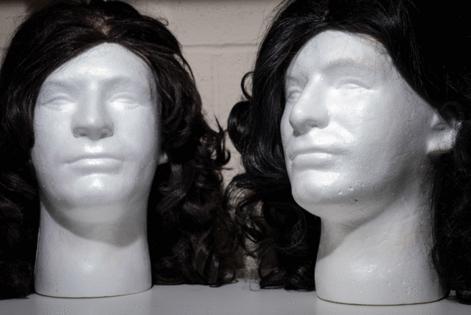
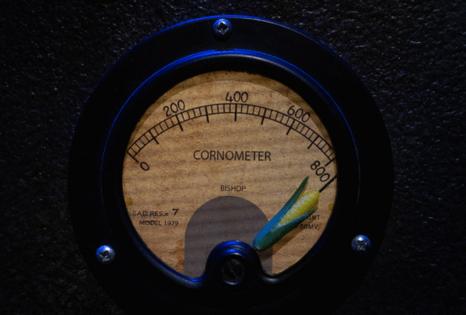
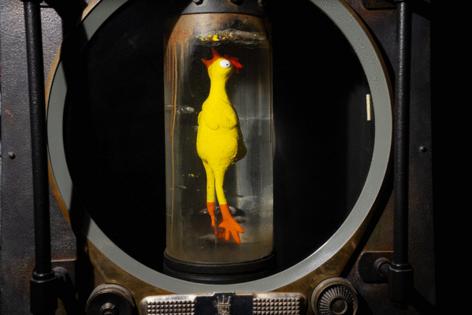
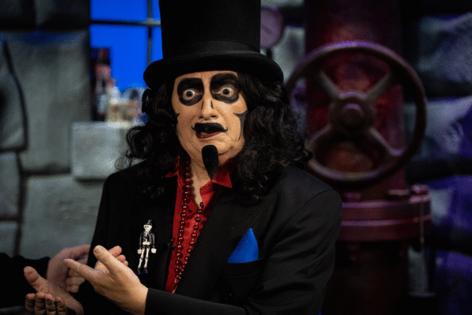
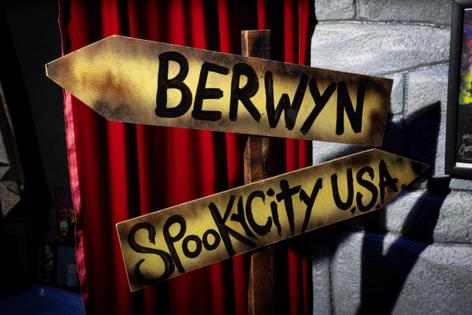







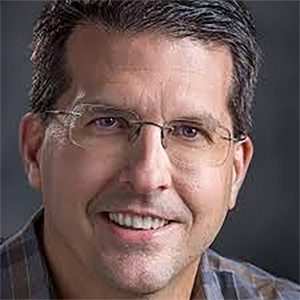
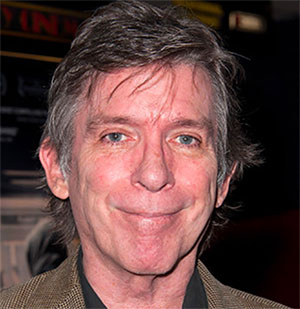








Comments